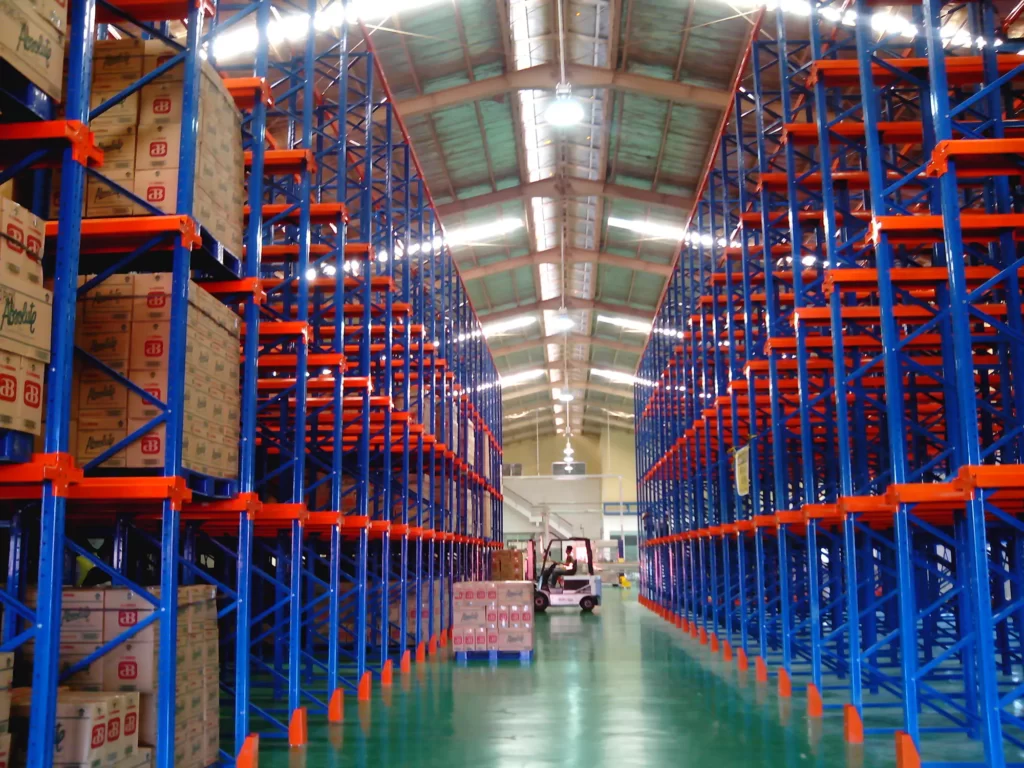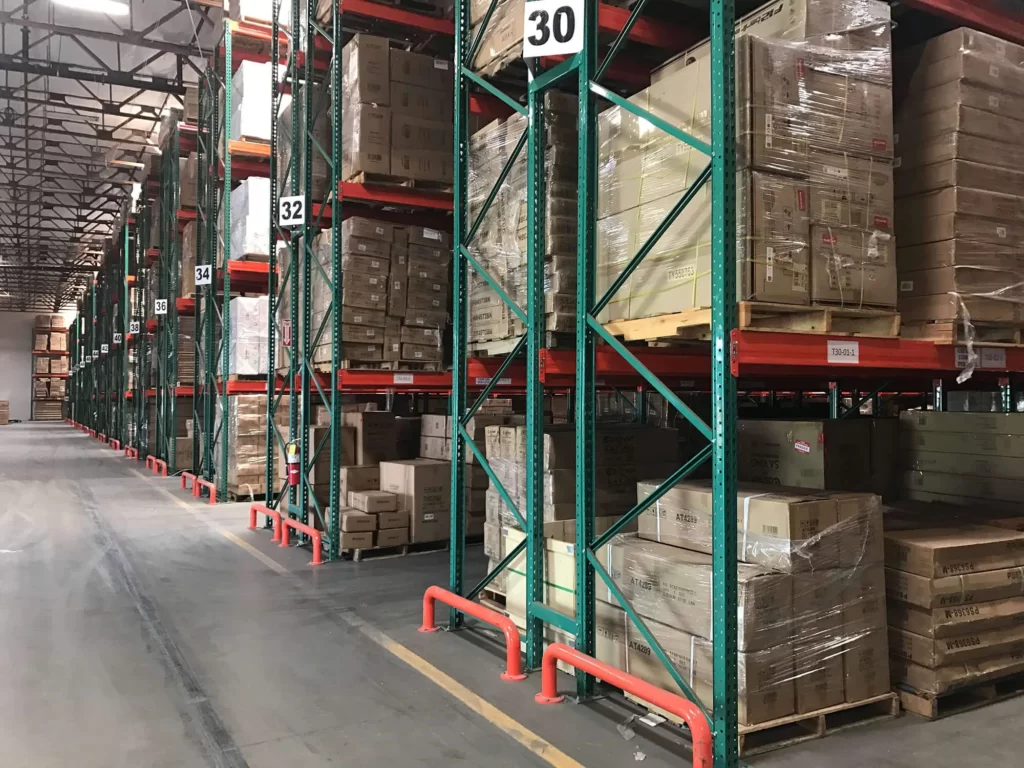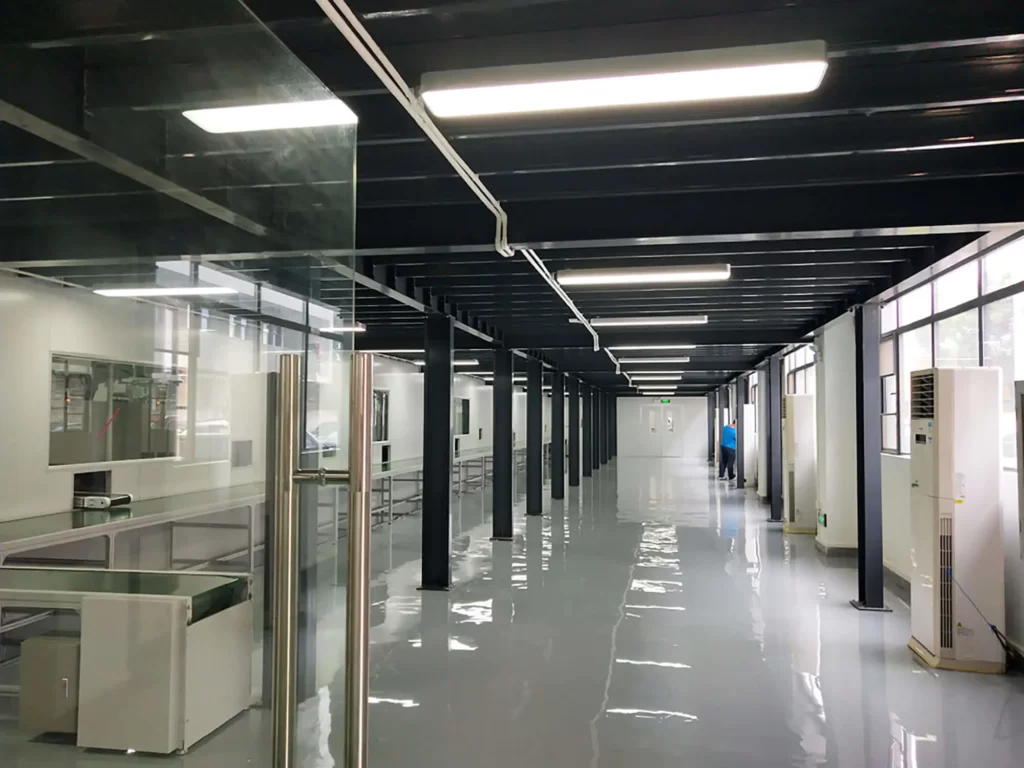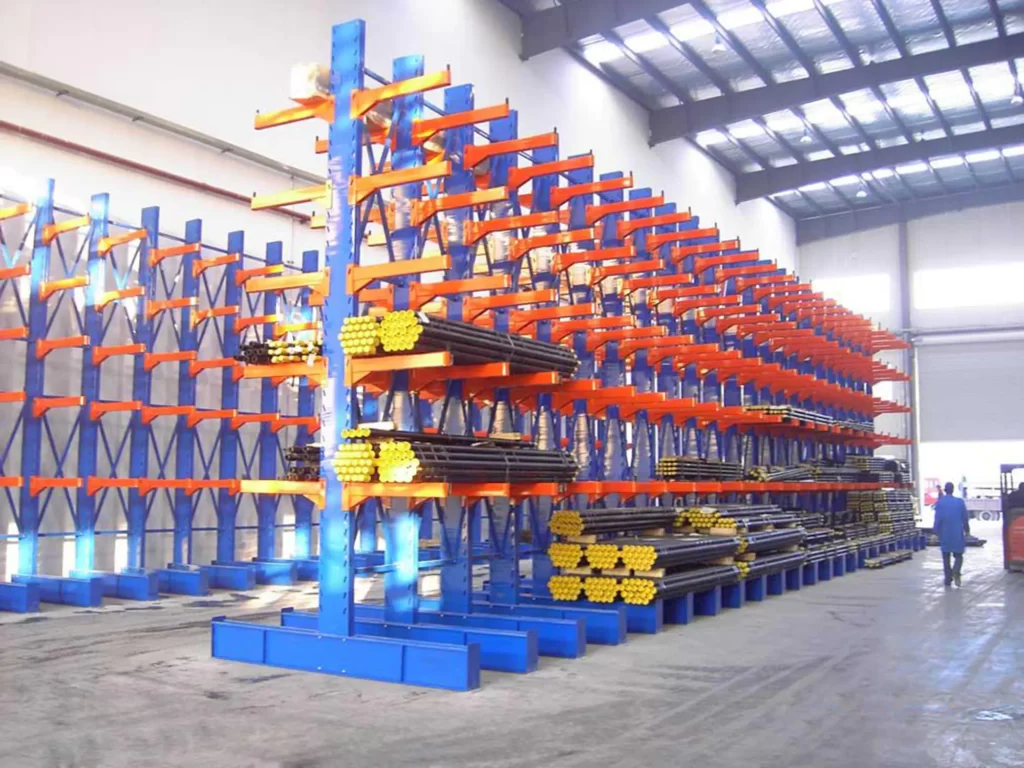There is sufficient effort involved in small warehouse designing. Wrong planning may leads you to experience higher expense, ineffective workflow, and loss of space. These problems can directly impact your business ROI and productivity. If these issues persists for a longer time then you can face unsatisfied customers, frustrated employees, and lose your brand reputability. This is where when a proper simple warehouse design process comes in handy. Wondering how, uncover the facts right in this article. Keep reading!
Understanding Small Warehouse Design
You can define a small warehouse as a compact storage vicinity that facilitate effective good organization and retrieval. The main goal of the small warehouse is to imrpove or maximize storage besides ensuring hassle-free workflows.
Simple warehouse design refers to the desinging process of the warehouse. Proper and well planned designing allow you to efficient space usage, and facilitating quick picking and shipping.
Benefits of a Well-Designed Small Warehouse
Well designed small warehouses will help your business grow. Here are the top 5 benefits of an optimally designed small warehouse.
1. Cost Savings
Smart small warehouse design can help reduce unnecessary costs. Optimized lighting, insulation, and layout to reduce energy costs. Streamlined workflow decreases labor costs by shortening time.
2. Optimized Workflow
Design of a simple warehouse enhances its speed of operation. Clear zones help in faster receiving, storing, picking, and shipping. This ensures that aisles are laid out efficiently to decrease congestion and travel time which eventually improves staff productivity.
3. Improved Storage Efficiency
Well designed warehouse can simultaneously maximise the vertical and horizontal space, and thus has a higher storage capacity. Such storage systems are flexible and can be used to store and secure all types of inventory for minimizing inventory loss or damage.
4. Enhanced Inventory Management
A Warehouse Management System (WMS) simplifies tracking and accuracy. It helps reduce stockout and overstocking eventually contributing to faster order fulfillment.
5. Safety and Compliance Improvements
An effective design lead you face clear path and proper safety in your warehouse. You can eliminate accident by adhering to local regulations and by creating a safer working environment for your employees and goods.
Simple Small Warehouse Designing – Step By Step
Step 1: Assessing Warehouse Needs
Business Requirements
You need to first decide what products you want to keep in your storage. Are you storing perishable items which require temperature controlled storage or bulky, non perishable items? Your storage systems and layout of the warehouse will depend on the type of inventory you handle. In addition, you should also consider your inventory turnover rate. High turnover will need more efficient picking systems and more space for slow moving items.
Future-Proofing
As your business grows, so will your storage needs. Although this is not always the case, when you are designing your small warehouse, it is important to consider your future expansion. Consider changes to business operations such as switching to online or introducing new product lines. Having a simple warehouse design that is scalable will save you from costly re-designs further down the road.
Budget Allocation
Before you start doing any design work, set a clear budget. The purchase of storage systems, technology and necessary equipment should be equivalent to design and construction budget. Nevertheless, you should always consider quality and price effectiveness. Design of a small warehouse should be good enough and should yield good ROI thereafter.
Step 2: Selecting the Right Location
Key Considerations
Location has a great influence on small warehouse design. The location is chosen as close as possible to the suppliers, customers, and major transport hubs to minimize transportation costs and delays. You should also be aware of local zoning laws and regulations that can alter your design possibilities.
Accessibility and Connectivity
Make sure that your warehouse is within easy travel by road, rail or port. Convenient access to loading and unloading docks is a critical aspect as this contributes to smooth operational flow. Also, include in your planning how much space you will need for staff and trucks, as this is very important if your business involves handling heavy shipments or large number of goods.
Step 3: Designing the Warehouse Layout
Warehouse Layout Design Core Principles
In a simple warehouse, it works fine when space utilization can be maximized. Hence, you have to ensure that the flow of goods from receiving end to shipping and other processes do not get hampered in the least. It will help in saving time that is used in handling for unnecessary movement.
Types of Warehouse Layouts
Multiple warehouse layout types exist to choose from including:
• L-Shape layout: This layout is perfect if your warehouse feature an irregular or odd shape.
• U-Shape Layout: Small warehouses which are experiencing low space can use this layout to facilitate faster receiving and delivering.
• Straight Layout: It features a staright and simple layout that allow you to quickly retrieve or deliver goods.
Please note each layout features specific benefits or disadvantages. You need to choose a layout that suits your end goal or objective and aliign with your needs.
Key Zones in a Small Warehouse
When designing your small warehouse make sure to properly define zones such as:
· A receiving area where you will unload your goods
· Storage zone where you will store items in bulk. In this zone you will utilize shelving or racking systems as per your needs.
· Pick and packaging zone where you carry out faster and efficient order fulfillment.
· In the end there will be a shipping area which you use to dispatch goods
The strategic placement of these zones is paramount to eliminate unnecessary movement and ensuring optimum workflow.
Optimizing Aisle Width and Flow
Aisle design works well when the density of storage is balanced by the ease of movement. Aisles must be wide enough for forklifts and staff to go around but not waste any space. It is important to follow safety regulations to ensure no one gets hurt when walking down an aisle.
Step 4: Choosing Storage Systems
Types of Storage Systems
Depending on your inventory characteristics, you need to deploy the right solution of storage to complement simple small warehouse design. Multiple options are:
• Multiple pallet racking systems exist including selective racking, drive in type, and push back. You need to evaluate which one suit your space and requirements.
• Option exist to deploy shelving systems which exist in long form or mobile form. They are good for smaller or light weight items.
• In the end there also exists special storage systems which you can utilise for cool or hot goods which needs specific temperature for storage.
Evaluating Storage System Suitability
See to it that your storage systems fulfill your requirements, space, budget. Although there are times when the most expensive option is not the most efficient. Think about how you can incorporate flexible racking and shelving systems that can be reconfigured as your business changes and grows.
Step 5: Implementing Warehouse Technology
Essential Technologies for Small Warehouses
Technology integration can boost the efficiency of your warehouse remarkably and cut off surplus costs such as:
• If you make use of WMS system then you can automate the operations, you can witness timely tracking, inventory management, etc.
• You can utilize RFID or Barcode scanners to identify the items and get rid of anykind of human error
• In case if you have higher turnover rate you can deploy automated picking systems. This will save you time and eliminate labor costs.
Cost vs. Benefit Analysis
A large initial investment in technology may be required, but the savings over the long term must be considered. The upfront cost is worth it and it would also help automated systems lower labor costs and increase accuracy. Make sure you select technology that is scalable, so it can grow with your business.
Step 6: Ensuring Safety and Compliance
Regulatory Standards and Compliance
Your small warehouse design must adhere to all local safety regulations and codes. This includes fire safety standards and OSHA guidelines. Fire suppression systems and there must be emergency exits clearly marked.
Warehouse Safety Practices
Make sure there are at least some basic safety measures, such as proper lighting, ventilation, and marked signage. The areas of highest risk must be protected with safety barriers and your team must be trained regularly in safety.
Step 7: Sustainable Warehouse Design
Energy-Efficient Practices
Energy saving practices are also included in your small warehouse design which will help in cutting operational costs. Install LED lighting, energy efficient heating and cooling systems, and to reduce your carbon impact, consider adding solar panels.
Reducing Waste and Optimizing Resources
For example, recycling programs and using sustainable materials add to your arsenal for designing your warehouse to reduce waste. It is not just good for the environment but also good for the brand image and will also save you on long term operational costs.
Step 8: Finalizing Construction and Setup
Working with Contractors and Designers
Have experienced professionals do the construction and design correctly. A specialist team can save you from making costly mistakes and ensure that your warehouse meets your operational requirements.
Phased Implementation
Set up your warehouse in stages. Before setting up the whole warehouse, test out different zones and workflows to make sure everything flows as it should.
Pre-Operational Checks
During start up all systems, layouts and equipment are checked thoroughly to ensure they are all operating as required. It examines potential design errors that may impact efficiency.
Step 9: Operational Considerations Post-Setup
Staff Training and Onboarding
Training your staff is important. They should be able to understand layout, safety procedures and technology so that they start maximizing operational efficiency from day one with minimum learning.
Ongoing Maintenance
It is important to keep your warehouse in regular order. You should periodically check equipment, infrastructure and processes to ensure long term efficiency.
Key Considerations in Small Warehouse Design
To build an efficient and safe small warehouse design, there are a few important things you should have in mind when making one. Here’s what you should focus on:
Warehouse Purposes and Requirements
The goods you store are perishables, heavy equipment, lightweight items — these will dictate your layout and storage solutions. You also need to design for specific workflow processes like receiving, storage, picking, and shipping in order to reduce chaos as much as possible.
Layout Optimization and Available Space
Dimension and constraint of your warehouse space should be planned well. A simple design of the warehouse can be used with the space available, taking advantage of vertical storage through racking systems and mezzanines.
Future Expansion and Scalability
Consider the future and build for it. It is flexible in the sense that the layout of the warehouse can easily be changed to accommodate changes in the inventory and equipment to suit any changes in the business.
Safety and Compliance
Make sure that proper emergency exit signage is installed and local building codes and fire safety standards are adhered to.
Budget Planning & Cost Efficiency
A balance between functionality and cost effectiveness. Use durable materials and phased upgrades to address essential needs and stay within budget.
Common Mistakes to Avoid in Small Warehouse Design
When designing a small warehouse, avoid the bad mistakes, because the time, money and energy saved are worth it. Here are some common pitfalls to steer clear of:
Poor Space Utilization
Yet this could mean you are not making the best use of vertical space. It can restrict movement and cause safety issues but it also limits productivity. Hoist it up (vertically) where you can, maximize every inch of space.
Inefficient Workflow
The misalignment of receiving, storage, and shipping zones interrupts smooth operations. Without proper labeling and tracking systems, it’s easy to lose items and cause delays. Specify the zones clearly and invest in smart tracking systems to streamline the workflow.
Neglecting Safety Measures
Inadequate fire safety systems and lack of safe storage of equipment affect safety making it compromised. Ignoring local regulations also puts your warehouse at risk. To prioritize safety, integrate the right fire safety measures and ensure compliance.
Poor Lighting and Ventilation
Dark and uncomfortable working spaces are a result of inefficient lighting. This results in poor air quality because there is not enough ventilation. Bright, energy efficient lighting and good ventilation are necessary for employee well being.
Ignoring Employee Ergonomics
Work spaces that have poor ergonomics built into them can lead to strain and even injury. It would cover design areas and height adjustable workstations to reduce repetitive motions for a healthier, more efficient workforce.
Conclusion
Small warehouse design should be based on the balance of functionality, safety, and scalability. The top priority should be space usage and safety along with easy workflow. Every decision you take—from the choice of the right layout to selecting the appropriate technology—should be based on how to optimize productivity without disregarding regulations. As you grow your business, you should check your design regularly and make changes, such that your operations will run smoothly. However, with an investment for a small warehouse with a good plan, you will lower your costs, make your business more efficient, and do your business in a safer environment, and this will help your business to run well in the long run.








